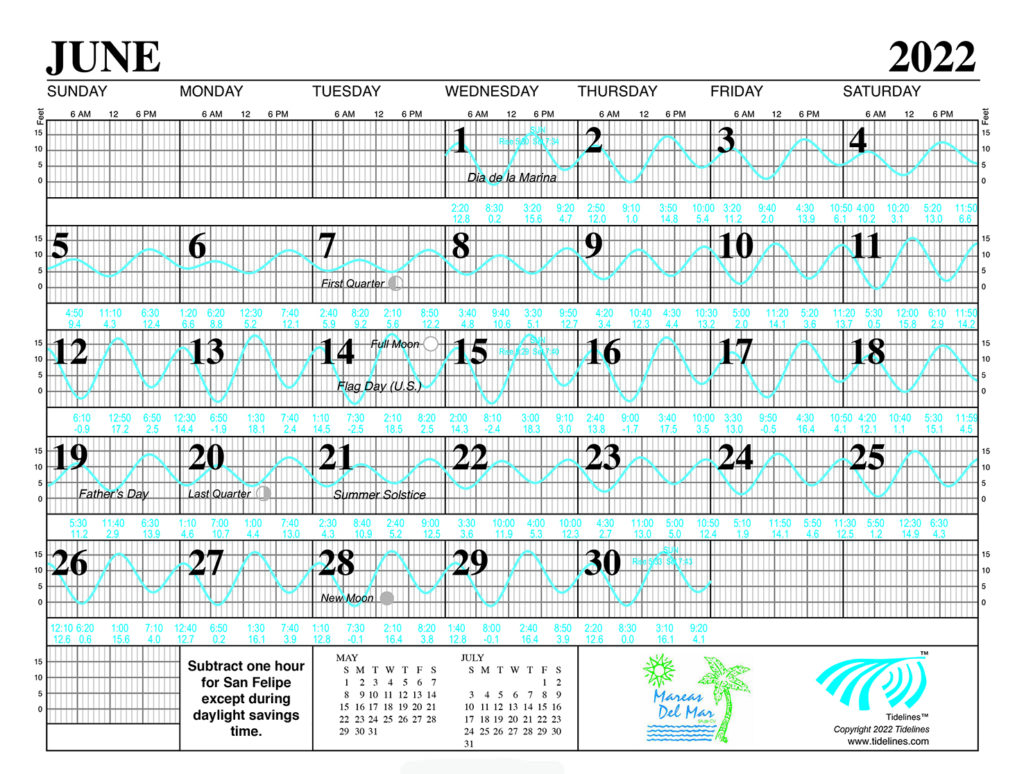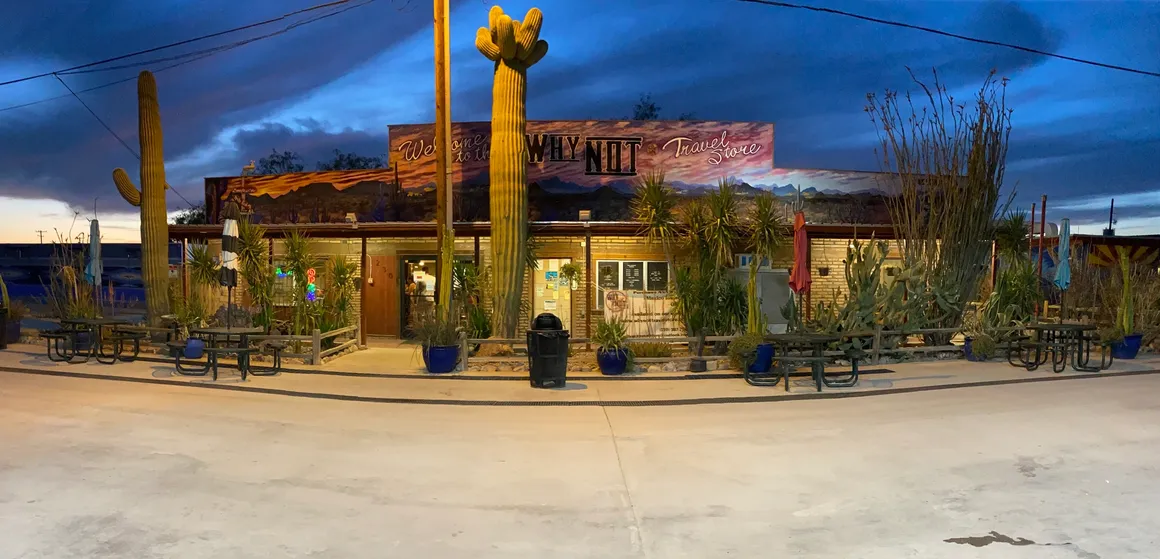Your eagerly anticipated arrival to Rocky Point finds you with your feet in the sand, the sun on your face, poised, ready to take that inaugural first dip into the ocean….but wait…..what? Why is the water way out there? Don’t be alarmed. Here is the skinny on nature’s intricate and magnificent plans. During the next 24 hours you are about to experience the predictable, the reliable, the phenomenon of oceanic tides. For the visitors to Sandy Beach, you will notice a moderate rise and fall of the tide, but for those of you on the North side of Black Mountain at Laguna Shores Resort, in Cholla Bay, or Islas del Mar, you will see a most extreme fluctuation of the tide. At first you may find this disconcerting but read on to uncover and soak up the science behind the daily tides. The technical data is kinda fun and most interesting. A basic understanding and overview of tides will go a long way in helping you plan ahead for your beach days at Rocky Point. Ready?……
What exactly is a tide? Simply explained, a tide is the rise and retreat of seawater along a coastline. When the water advances to its furthest extent onto the shoreline this is called High Tide. When the seawater recedes to its furthest extent, this is called Low Tide.
What causes a tide? Gravity – the Moon – the Sun. The Earth’s rotational force and the Moon’s gravitational pull on the Earth are the 2 main factors responsible for high and low tides. Although the Sun’s gravitational pull on the Earth is 178 times stronger than the Moon’s, the gravitational pull is weaker due to the distance of the Sun from the Earth. In turn the gravitational pull of the Moon is much stronger because it is closer the Earth – this pull is known as a tidal force.
Wait…..it gets even cooler!
A day on Earth (as we know it) is the time it takes our planet to spin once on its axis with respect to the Sun – 24 hours, also known as a Solar day. However, the time it takes our planet to reach the same position in relation to the Moon, is on average, 24 hours 50 minutes – this is what is called the Lunar day. Pulling rank, the Moon’s gravitational force on Earth is much stronger than the Sun’s so our tides follow the Lunar day, not the Solar. From one high tide to the next it takes on average 12 hours-25 minutes or half of a lunar day – which is why we have high and low tides twice per day.
Let’s talk types of tides…
Spring Tides. When the Earth, Moon and Sun align (this happens at the time of a full or new Moon) the lunar and solar tides reinforce one another resulting in more extreme tides. Scientifically speaking Spring Tides are also known as Perigean Spring Tides. Perigean means the Moon is closest to Earth and its gravitational pull is the strongest or at its perigee – typically a 29.5 day cycle.
FYI… the term “spring” does not refer to the season but rather the motion.
Neap Tides. Opposite of a spring tide, neap tides occur when the tidal forces work against each other causing smaller tides.
King Tide. A King Tide is another term for a Perigean Spring Tide, although it is often referred to as the highest tide of the year. Factors that influence a king tide can include location, tidal range and local weather conditions – typically a king tide will be experienced once or twice per year.
A little mention about “Rip Currents?” …….. A rip current often (misleadingly) referred to as a “Rip Tide” – this occurs near beaches when breaking waves – a localized, narrow current of water which moves directly away from the shore, it cuts through the lines of breaking waves (much like a river running out to sea) ….No worries…. Rip currents seldom, if ever present themselves at Rocky Point.
Tide Varieties: There are 3 varieties of tides
Semi-Diurnal Tides are the most common type – they consist of 2 high tides and 2 low tides in each lunar day.
Diurnal cycle is when there is only 1 high tide and 1 low tide in a lunar day (commonly found on the East Coast and Gulf of Mexico).
Mixed Tides occur when there are 2 high tides and 2 low tides in a lunar day.
Now that you thoroughly appreciate the “ins and outs” of tides let’s put that knowledge to use. May I introduce you to your new best friend …THE TIDE TABLE …
This handy tool will arm you with all the information you need to plan any beach going venture, today, tomorrow, 30 days from now.
The Tide Table outlines the dates, times and tidal changes that will occur on any given day – follow our live tide report on our website www.lagunashoresresort.com or The Rocky Point Times has the monthly Tide Chart in every publication.
The Tide Charts are full of useful information, so much more in depth than the daily weather report. You will discover moon phases, sun rise and set, wind conditions, and most importantly the tide times and measurements.
A key factor in reading a tide table is understanding the chart datum – the figure that tidal heights are measured against. Basically, the chart datum is the average of high and low tides and will indicate the depth of the water at any given time.
INSERT JUNE TIDE TABLE
Looking at the table for Tuesday, June 14, 2022, you can see that our first high tide will occur at 1:12am MST with a water measurement of 4.28m then it moves to low tide at 7:24am with a water measurement of -1.26m – back to high tide at 2:04pm with 5.30m and 2nd low tide at 8:16pm with -0.37m
Did you notice that on June 14 there is a new moon? You recall what this means for our tide? Yep – we will see a “spring tide” – high high tides and low low tides.
Therefore, if you are wanting to plan your day at the beach – noon would be a great time to layer on the sunscreen, pack up the cooler and beach towels – head to the beach and soak up the joy of high tide.
Some of you may be feeling slightly jaded, possibly inconvenienced by this unexpected interruption of your perfect beach day but, with your newfound knowledge of the tides and the support of the tide table you are now prepared to plan your days well in advance. Your valuable vacation time does not have to be at the mercy of the tide, there are so many things to do during low tide, take a walk on the ocean floor, dig for clams, search for treasures left behind by the last high tide – (please leave any sea creatures in their habitat). Have some lunch at our Laguna Shores poolside restaurant, take a bike ride around the resort, play some tennis or team up for a friendly game of beach volleyball, book a massage in our spa. You could head into town and check out all the amazing activities available – jet skiing, fly high in the sky on an ultra-light, banana boat rides, fishing charters, sunset cruises, the pirate ship excursion, take a boat trip to bird island and watch all the sea lions, rent an ATV or RZR, walk the Malecon. The list is endless. If you need any help or guidance with your adventures, please see our activity staff at Laguna Shores, they are more than happy to help you find the perfect fun filled experience.
Kick back, relax. Let Mother Nature do her part and fear not, the tide shall return.



























